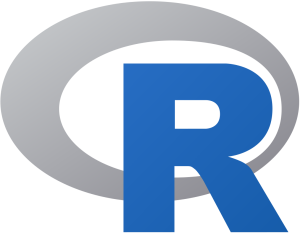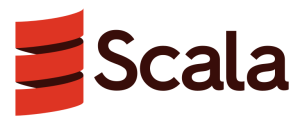For the past couple of months the internet has been flooded with AI news, AI generated content, AI controversies, and many other things that we’d say will continue to happen for a long time.
Alongside those things, people like you may have wondered how this AI technology works? How did they create it?
Well, by learning some of the programming languages you might get your answer and even start your journey in developing this technology of the future.
Table of Contents
Toggle
What Does AI Programming Even Mean?
AI is an umbrella term that covers a lot of sub-categories such as robotics, data science, machine learning, natural language processing, and many more.
But, in general AI programming involves writing software that acts intelligently, like a human would. This may include making decisions, recognizing speech and understanding language.
One thing to always remember is that AI relies on data, so AI programming or development furthermore involves creating codes and software that can process data, recognize patterns to make guesses or decisions based on that data.
As AI becomes more advanced, the demand for skilled programmers will continue to grow, and maybe you’ll be one of them!
Is AI Programming Hard?
The answer is a truthfully yes. Developing AI applications requires more than just knowing a programming language. You’ll need a solid grasp of computer science, mathematics, and a deep understanding of complex algorithms
We’re talking more than algebra and calculus, some other important ones are probability, statistics ,and even information theory.
Mastering any skill takes discipline, time, and effort, and AI is no exception. However, the payoff for those who are up for the challenge can be well worth it.
As a data scientist, machine learning, natural language processing expert, or in other AI fields, you’ll have the flexibility to work in a variety of exciting industries, from healthcare to finance and more. And let’s not forget about the high earnings potential.
Python
We put Python at the top because Python is more than your general purpose language; you could say it’s a data scientist’s best friend (and also friends with other AI fields of course).
With its remarkable ability to process large amounts of data easily, Python has become the language of choice for many data scientists, and also for aspiring data scientists as the barrier to learning the language is easy.
The most important advantage is that Python has an active ecosystem and communities that continuously support the development of many important AI frameworks and libraries like Pandas, TensorFlow, Keras, and Scikit-learn.
But, be careful as this advantage can act as a double-edged sword, where there are a lot of libraries to choose from, there are also a lot of abandoned and unverified libraries.
In general, Python is also slow for computation, for example compared to C++, which we’ll talk about later in the article.
Simple search in using keywords such as “Learn Python for AI” will yield you thousands upon thousands of websites, courses, blogs, and many other resources that can kickstart your Python AI programming journey.
R
R is another top contender for data science that’s often compared to Python, but over Python R has exceptional use for statistics, data visualization, and predictive modeling, unfortunately it’s generally less used.
One of the reasons is because R is only great at the specific use we mentioned before, its flexibility and extensive ecosystem on the other hand isn’t on par with Python.
But if you’re focusing more on data analytics, statistics, and other mathematical sides of AI and machine learning, R is definitely a great choice.
It’s the top choice language to make sense of complex data sets and gain insights that are invaluable to advance your AI’s dataset and algorithms.
Scala
Scala is a programming language that takes “scalability” to a whole new level— hence its name. Scala is designed to run on the Java Virtual Machine (JVM), which means it inherits Java’s power while adding its unique features, making it ideal for large-scale data processing.
When talking about AI/ML development, interoperability is key. That’s why Scala is such a great choice – it plays nicely with Java, making it a breeze to integrate with existing AI codes and softwares in Java.
Scala also has a growing community of developers, with several open-source libraries and frameworks available for AI/ML development, for example Breeze and Spark.
Scala may not be the most popular choice for AI/ML, but it’s definitely worth considering, it can still be among the top choices for certain projects that need large-scale data processing, and also interoperability with existing Java-based softwares.
C++
C++ is a high-level language that offers low-level control over hardware resources (if necessary) to provide efficient and fast execution of code.
This is why C++ is used to build many popular AI and machine learning libraries or frameworks like OpenCV for computer vision, Numpy, and Tensorflow, which later on Python is used to operate them.
This puts C++ on the advanced side of AI and machine learning, where frameworks & libraries are built to be even modified, algorithms are optimized using low-level features, and specific situations where Python isn’t viable.
So, unless you’re already familiar with C++ and want the nitty gritty details, Python is still a better choice if you’re new to the whole AI and machine learning subject.
Julia
If this is the first time you hear about this language that’s because similar to R, Julia is mostly used for mathematics or statistics related programming.
But, Julia is a high-level programming language that has become increasingly popular in the field of artificial intelligence. Especially for cases such as data science, deep learning, and numerical simulations that require speedy computation.
And that’s not all – because Julia’s syntax is designed to be approachable, there are already libraries specifically created for Julia AI programmers, like Flux.jl for deep learning and JuMP for optimization problems.
Its recentness and growing community or resources can be a little drawback, but that shouldn’t stop you finding out why Julia has been gaining attention, right?
AI Programming Languages: Which one is right for you?
Choosing the perfect programming language for AI development can feel like a chore. There are various factors to consider before taking the plunge, such as:
- The AI project’s nature, whether it is data science, machine learning, or deep learning.
- Your level of expertise as a developer, and your familiarity with various programming languages.
- Whether your organization has specific programming languages in their technology stack.
Remember, there’s no single language that fits all AI development projects, you even have to learn multiple languages just in case. So, the choice of language depends on the project’s unique requirements, and individual developers must carefully weigh the pros and cons of each language.
While AI programming or AI development isn’t our forte yet, Python, C++, Java, and many other web & mobile development languages are yours to choose to help you build your software development project together.
















